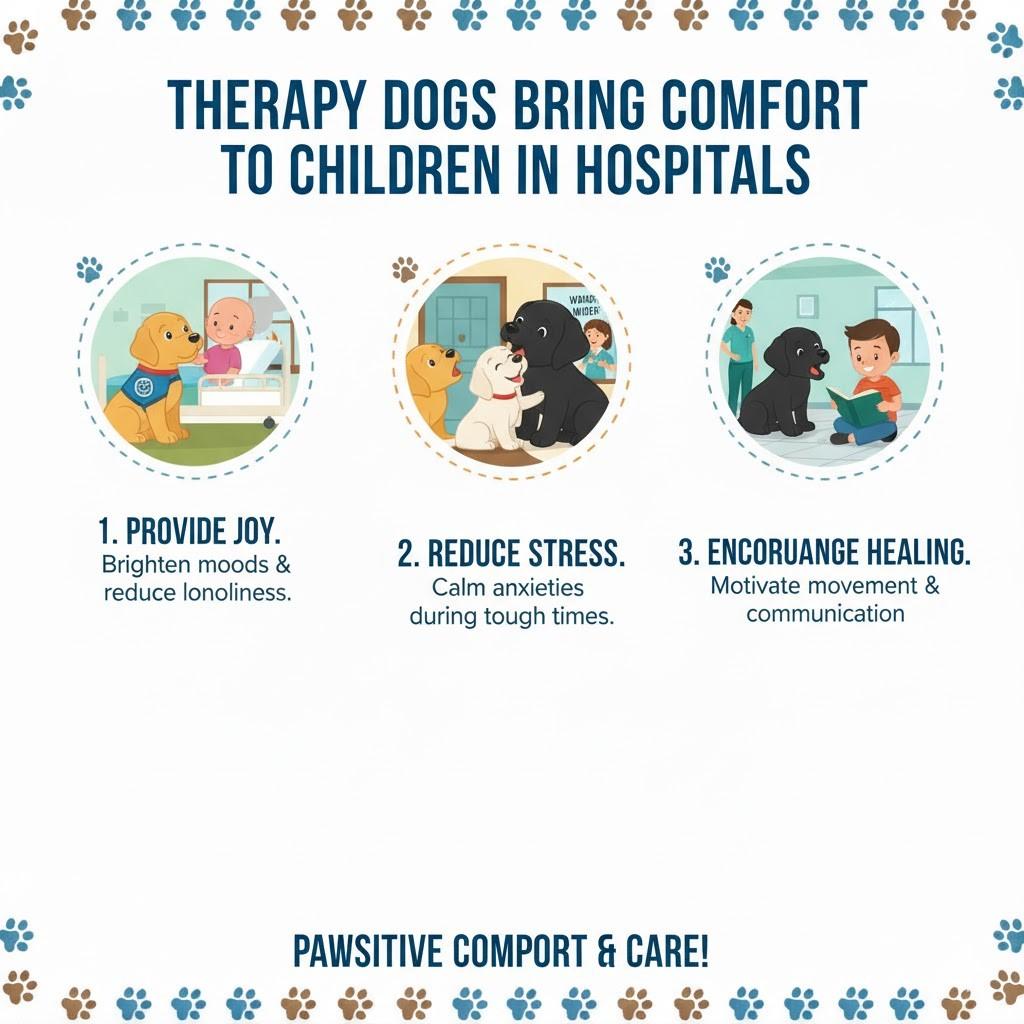
Therapy dogs are becoming an important part of hospital care, especially for children who are facing long treatments, anxiety, or difficult medical procedures. These gentle and loving dogs provide emotional support, reduce stress, and bring moments of happiness to young patients. Their presence turns hospital rooms into brighter, more comforting spaces filled with hope.
How Therapy Dogs Help Children Heal Emotionally
Children in hospitals often experience fear, loneliness, and uncertainty. Therapy dogs help ease these emotions by offering companionship and unconditional love. Their calm nature and friendly behavior make children feel safe. Simply petting a dog can lower stress levels, reduce pain perception, and create a sense of comfort during challenging moments.
Many children who struggle with talking to adults feel much more open when interacting with a therapy dog. These dogs help break emotional barriers and bring a sense of normalcy into an environment that can feel overwhelming.
A Simple Visit Makes a Big Difference
When a therapy dog enters a hospital room, the atmosphere changes instantly. Children smile, sit up, and reach out to welcome their furry visitor. A few minutes of gentle petting, cuddling, or even watching the dog perform simple tricks can brighten their entire day.
For children undergoing long-term treatment, weekly or daily visits become something they look forward to. These visits create joyful memories that help balance out the tough days.
Stories of Hope and Healing
Many hospitals share inspiring stories about how therapy dogs bring comfort to patients. Some children who struggle to speak begin talking more when a therapy dog listens to them. Others who hesitate to move after surgery feel motivated to walk beside a dog. For children facing emotional distress, therapy dogs offer silent support that words often cannot provide.
Parents and doctors have noticed that children who interact with therapy dogs show improved mood, better cooperation during treatment, and reduced anxiety.
How Therapy Dogs Are Trained
Therapy dogs go through special training to ensure they remain calm and gentle in all situations. They learn how to:
- Stay relaxed around medical equipment
- Respond safely to sudden movements
- Remain patient with children of all ages
- Offer comfort without becoming overwhelmed
Only dogs with stable temperaments and friendly personalities are selected for therapy work. Their purpose is to create a peaceful and positive environment for children.
Why Hospitals Support Therapy Dog Programs
Many hospitals now include therapy dog programs because they see the emotional and psychological benefits. These programs help children adjust to their surroundings, build confidence, and feel less isolated. Therapy dogs also support parents by giving them a moment of relief as they watch their child smile again.
Hospitals recognize that healing isn’t only physical. The presence of a therapy dog adds emotional warmth to the healing process.
Final Thoughts
Therapy dogs play a powerful role in bringing comfort to children in hospitals. Their calm presence, gentle nature, and unconditional love help young patients cope with difficult situations. These dogs offer more than companionship—they bring hope, joy, and emotional healing when children need it most. Their impact is a beautiful reminder of how deeply animals can touch our lives. PetsDogPuppy
